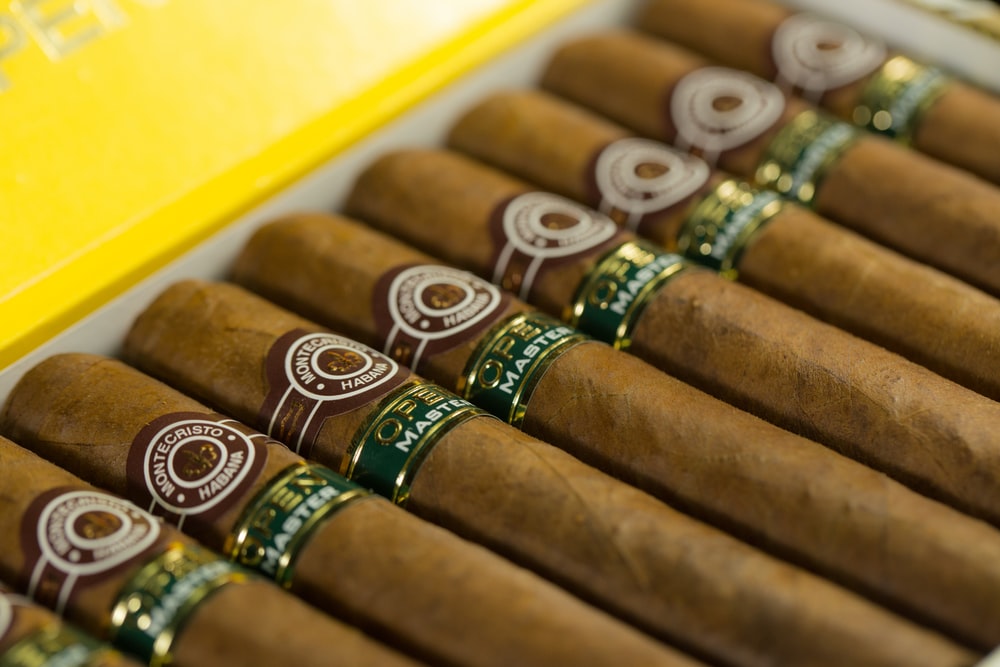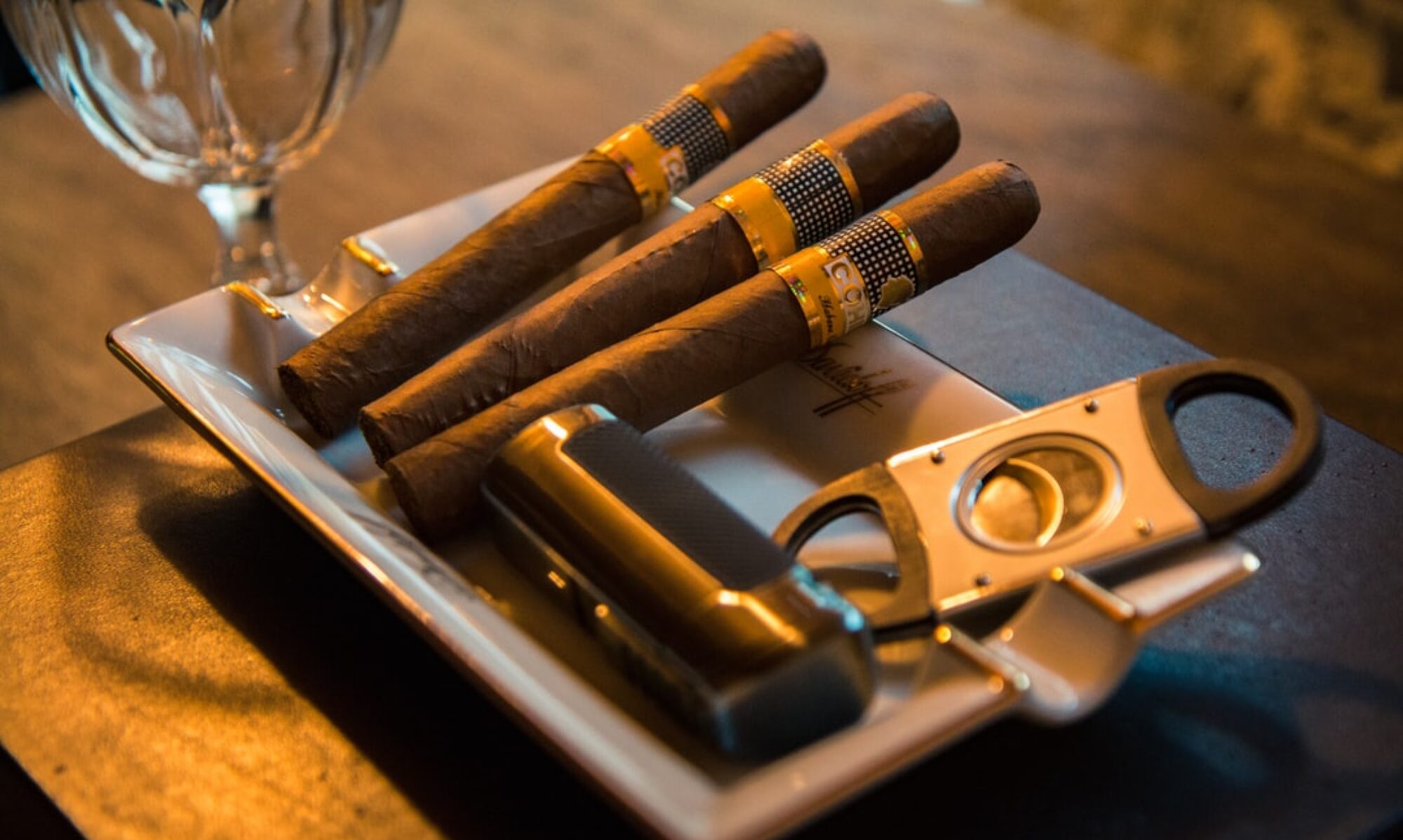Cohiba

Cuban Cohiba’s origins trace back to the middle 1960s, when a bodyguard of Fidel Castro shared some of his private supply of cigars made by a local artisan named Eduardo Ribera. These cigars pleased Castro so much that a special production of the unbranded blend, produced under tight security, was made for Castro and other top government officials.
The Cuban Cohiba brand was formally launched in 1968 at the direction of Cubatabaco, the Cuban state tobacco marketing bureau. The head of Cubatabaco asked Avelino Lara, head of the El Laguito factory, to create a new super-premium blend which differed from all previously existing Cuban cigars. During the first few years of production only a few thousand boxes were produced annually, reserved for the use of high government officials and frequently given away as diplomatic gifts.
The Cuban Cohiba brand was launched as a premium cigar brand into markets outside of the US in 1982 in conjunction with the 1982 World Cup held in Spain. At the time of its first public launch, the Cohiba marque consisted of just three vitolas (sizes): the Panetela, the Corona Especial, and the Lancero. In 1989 three more vitolas were added: the Robusto, the Exquisito, and the Espléndido. These first six are now collectively known as the company’s Línea Clásica (classic line).
In 1992 Habanos SA launched the first sizes in what it calls the Línea 1492, commemorating Christopher Columbus and his voyage to the Americas, with each size named for a century since Columbus’ discovery. The initial launch included the Siglo I, Siglo II, Siglo III, Siglo IV, and Siglo V, with a Siglo VI added in 2002.
Besides regular production, Habanos SA regularly releases limited release Cohíba cigars for such events as the annual Habanos Festival, brand anniversaries, and their annual Edición Limitada (limited edition) release of special sizes of their various cigar brands wrapped in a darker vintage leaf. In 2007, Habanos released a new line of maduro-wrapped Cohibas, called “Maduro 5,” in three sizes.
Montecristo

In July 1935, Alonso Menéndez purchased the Particulares Factory, makers of the popular Particulares brand and the lesser-known Byron. Immediately after its acquisition, he created a new brand named Montecristo.
The name for the brand was inspired by the Alexandre Dumas, père novel The Count of Monte Cristo, which was supposedly a very popular choice among the torcedores (cigar rollers) in their factory to have read by the lector on the rolling floor. The now-famous Montecristo logo, consisting of a triangle of six swords surrounding a fleur-de-lis, was designed by John Hunter Morris and Elkan Co. Ltd., the brand’s British distributor.
In July 1936, Menéndez founded a new firm with a partner, naming it Menéndez, García y Cía. With the growing success of the Montecristo brand, the firm purchased the faltering H. Upmann Factory (created by Hermann Dietrich Upmann in 1844) from J. Frankau SA in 1937 and transferred Montecristo production there. J. Frankau continued as sole distributor of the H. Upmann brand in the UK, while John Hunter Morris and Elkan Co. Ltd. was the sole distributor of Montecristo in Britain. In 1963, these firms merged to become “Hunters & Frankau”, which today is the sole importer and distributor of all Cuban cigars in the UK.
Through the efforts of Alfred Dunhill (the company), the Montecristo brand became incredibly popular worldwide and to this day accounts for roughly one-quarter of Habanos SA’s worldwide cigar sales, making it the most popular Cuban cigar in the world. Menéndez and García fled during the Cuban Revolution, and on September 15, 1960, after which the Montecristo brand, the factory, and all assets were nationalized by the government of Fidel Castro.
Menéndez and García re-established their brand in the Canary Islands, but were later forced to quit due to trademark disputes with Cubatabaco (later known as Habanos S.A.). In the mid-1970s, the operation was moved to La Romana and released for the US market, since Cuban government rights to the brand were not recognized under American law due to the 1960 nationalization and subsequent embargo. Menéndez, García, y Cía is now owned by Altadis S.A., who controls its distribution and marketing in the United States.
With Menendez and Garcia gone after 1959, one of the top grade torcedores, José Manuel González, was promoted to floor manager and proceeded to breathe new life into the brand. In the 1970s and 1980s, five new sizes were added: the A, the Especial No. 1 and 2, the Joyita, and the Petit Tubo. Three other sizes, the Montecristo No. 6, No. 7, and B, were released but subsequently discontinued, though the B can occasionally be found in very small releases each year in Cuba. Through the 1970s and 1980s, Montecristo continued to rise in popularity among cigar smokers, becoming one of Cuba’s top selling cigar lines.
Partagas

Today, most American cigar smokers are familiar with the Partagas brand. To them, it is a well-made, well-priced Dominican cigar, usually with a Cameroon wrapper. The Partagas Black series is still considered one of the strongest regular production cigars you can buy, and the Partagas 150 has become world renowned for its age and rarity. However, what many people fail to remember, or simply do not know in the first place, is that Partagas is one of the oldest cigar brands in existence, and its origins were not in the green fields of the Dominican Republic. It began 16 years before the American Civil War, on a small Caribbean nation just south of Florida.
In 1845, Spanish immigrant Don Jaime Partagas y Ravelo, built the Partagas factory in the city of Havana, Cuba. He strived to create the best cigar in the world, and had spent years buying all of the best tobacco plantations on the island, including in the lush region of Vuelta Abajo. His brand was an instant success and he became an innovator in aging and fermentation of cigar tobacco. After his tragic death in 1868, the company passed to his son and was then bought out by Cifuentes, Fernandez y Cia in 1900. In 1927, the same company also bought the rights to the Ramon Allones brand, and production on both was run out of the same factory.
Following the death of one of the partners of the company, the Cifuentes family became sole owners of the Partagas line and kept buying up smaller, yet popular brands such as Bolivar and La Gloria Cubana. By the late 1950s, Partagas was the 2nd best selling Cuban cigar in the world. However, there was severe unrest in the nation. The Cuban revolution would forever alter the political landscape of the world, and in particular the cigar industry. Following the take over of Fidel Castro, the Cuban tobacco industry was nationalized, with the government taking control of manufacturing and distribution. Although Ramon Cifuentes was offered a job in the new company, he chose instead to leave. Not only did he wish to avoid government interference with his brand, but he knew that they were now missing out on the lucrative American cigar market.
In the late 1970s, Ramon licensed the names of his two most famous cigars, Partagas and Bolivar, to the General Cigar company. They wished to create cigars with the same name brand and style, but crafted outside of Cuba. This would enable the brand to be sold in the United States. While production began, like many post revolutionary cigar, in Jamaica, the company finally settled on the island of Hispaniola, in the nation known as the Dominican Republic. From there, the Partagas brand was reborn and to this day is still one of the best selling cigars in the United States.
The original Cuban brand, however, is still crafted and distributed out of Cuba by the company known as Habanos S.A. It is still one of the top selling Cuban cigars in the world, being lead only by the ever-popular Montecristo brand. Its Serie D line has been called one of the best cigars in the world, and is coveted by true aficionados. The big question is really what will happen if Cubans are brought back into this country? Which Partagas will eventually win control over the much sought after American market? While there is no answer to this yet, for now sit back, relax, and enjoy either of these truly outstanding cigars
Romeo & Julieta

Established in 1875, and named after Shakespeare’s famous tragic play, the Romeo y Julieta brand has been sparking love affairs with cigar smokers around the world for over 145 years. Solely handmade in Havana up until the infamous Cuban trade embargo of 1962, Sir Winston Churchill was perhaps the brand’s most illustrious enthusiast, and the flagship vitola of the brand is named in his honor. Today, the popularity of this brand is stronger than ever with prestigious factories located in the Dominican Republic, Nicaragua, and Honduras. The company’s meticulous attention to detail combined with respect for its Cuban heritage has created a legacy of extraordinary quality, construction, and flavor that extends throughout its many line extensions. With flavor profiles that range from creamy smooth and mellow, to rich and bold, every cigar enthusiast is sure to find the perfect Romeo y Julieta cigar to suit his or her smoking needs.
H. Upmann

Way back in 1844, two brothers, August and Hermann Upmann started the H. Upmann cigar brand in Havana. They are also acknowledged as the inventors of the cedar box as a means to store cigars. Today this company holds the honor of being one the oldest cigar brands still produced today. The company’s longevity is a testimony to their commitment to excellence. This fundamental belief has rewarded them with a long history of producing many of the top-selling blends from the Dominican Republic. H. Upmann cigars once known exclusively for their smooth, flavorful smokes have now added many new brand extensions to their ever-growing portfolio offering the smoker many choices of flavor and strength while still maintaining the benchmark of quality that made them famous.
